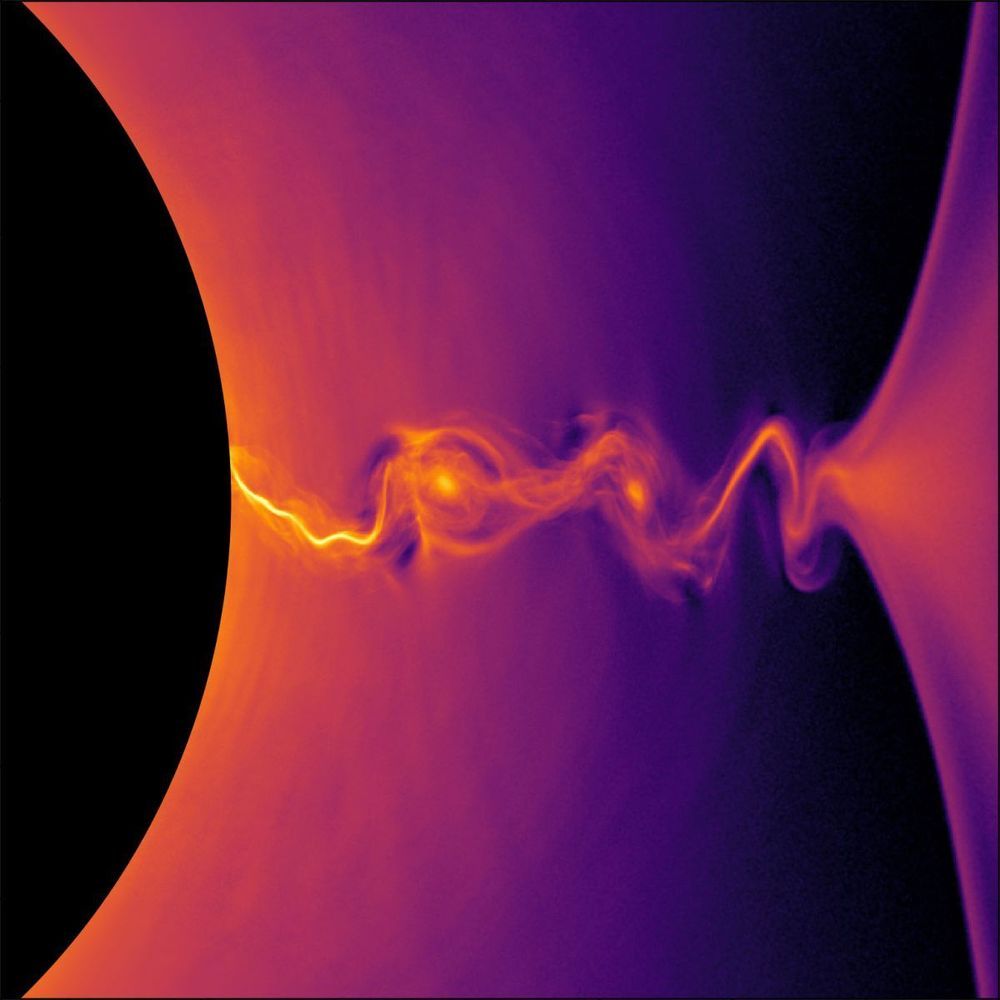The gravitational pull of a black hole is so strong that nothing, not even light, can escape once it gets too close. However, there is one way to escape a black hole — but only if you’re a subatomic particle.
As black holes gobble up the matter in their surroundings, they also spit out powerful jets of hot plasma containing electrons and positrons, the antimatter equivalent of electrons. Just before those lucky incoming particles reach the event horizon, or the point of no return, they begin to accelerate. Moving at close to the speed of light, these particles ricochet off the event horizon and get hurled outward along the black hole’s axis of rotation.
Known as relativistic jets, these enormous and powerful streams of particles emit light that we can see with telescopes. Although astronomers have observed the jets for decades, no one knows exactly how the escaping particles get all that energy. In a new study, researchers with Lawrence Berkeley National Laboratory (LBNL) in California shed new light on the process. [The Strangest Black Holes in the Universe].









Comments are closed.